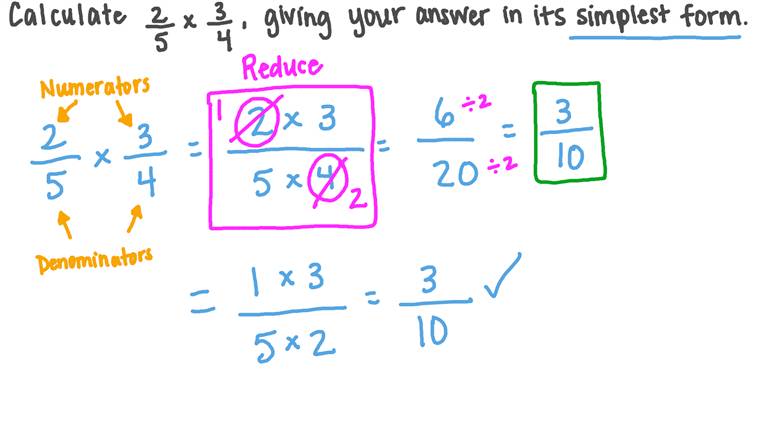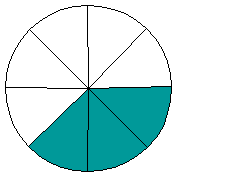Fraction Calculator
Decimal to fraction results for 0.6 as a fraction: Whole number-integral part: empty Decimal to fraction: .6 as a fraction = 6/10 Simple fraction result The level of precision are the number of digits to round to. Select a lower precision point below to break decimal 0.6 down further in fraction form.This free fraction calculator supports fraction addition, subtraction, multiplication and division. Explore many other math calculators, as well as hundreds of The numerators also need to be multiplied by the appropriate factors to preserve the value of the fraction as a whole. This is arguably the simplest...66.6% as a fraction. Here you can learn how to write or convert any percentage to a fraction. As the numerator is greater than the denominator, we have an IMPROPER fraction, so we can also express it as a MIXED NUMBER, thus 125/100 is also equal to 1 1/4 when expressed as a mixed number.In a fraction the top number is the count. We do this by multiplying by 1 in the form of 6/6 because in the denominators 1 times 6 =6 Giving: 4/1 times 6/6 =(4 times 6)/(1 times 6) = 24/6 We have now changed the way 4 looks, we are counting a smaller size so there has to be more of them to make the...Unit fraction: A unit fraction is a rational number which is written as a fraction where the numerator is one and the denominator is a positive integer. A unit fraction is having a numerator of 1, 4 is the numerator in 4/6 so add 1/6 for four times. To write 4/ 6 as unit fraction we can write it as
Fraction Calculator
For example, in order to get a decimal fraction, 3/4 is expanded to 75/100 by multiplying the numerator by 25 and denominator by 25The denominator of a fraction in the simplest form is greater than the numerator by 1. If 4 is added to the numerator, and 3 is subtracted from the denominator, then the fraction itself is increased by 2 1/6 . Find the original.Show the unit fraction for the following fraction The unit fraction is written using a numerator of 1 and keeping the original denominatorWhat is 4.6 as a fraction? Here we will show you step-by-step how to convert 4.6 to a fraction. You can take any number, such as 4.6, and write a 1 as the denominator to make it a fraction and keep the same value, like this: 4.6 / 1. To get rid of the decimal point in the numerator, we count the numbers...

What is 66.6 as a fraction?
A unit fraction has a numerator of 1 so since 4 is the numerator in 4/6 you would have to add 1/6 for four times. Hope this answers the question.To make it a mixed fraction, it's 4 and 6 10ths. 46 is an integer, and there is no sensible way to represent it as a fraction.1 decade ago. to convert a decimal number into a fraction, you know that if you have 4.6 what you really have is 4.6/1 so you also know that you can multiply a fraction by a number just if you multiply both parts by the same number, so you multiply 4.6 by 10 and 1 by 46/10 as an improper fraction.Section A.2 Fractions and Fraction Arithmetic. The word "fraction" comes from the Latin word fractio, which means "break into pieces." For thousands of years, cultures from all over the world have used fractions to understand parts of a whole.Decimal to Fraction Number calculator - online basic math function tool to convert decimal point number 6.4 to fraction equivalent. getcalc.com's decimal to fraction calculator to find what's an equivalent fraction for the decimal point number 6.4 or 640%. 32/5 is a simplest fraction and 640/100...
Below are multiple fraction calculators capable of addition, subtraction, multiplication, division, simplification, and conversion between fractions and decimals. Fields above the solid black line represent the numerator, while fields below represent the denominator.
Mixed Numbers Calculator
Simplify Fractions Calculator
Decimal to Fraction Calculator
Fraction to Decimal Calculator
Big Number Fraction Calculator
Use this calculator if the numerators or denominators are very big integers.
In mathematics, a fraction is a number that represents a part of a whole. It consists of a numerator and a denominator. The numerator represents the number of equal parts of a whole, while the denominator is the total number of parts that make up said whole. For example, in the fraction
, the numerator is 3, and the denominator is 8. A more illustrative example could involve a pie with 8 slices. 1 of those 8 slices would constitute the numerator of a fraction, while the total of 8 slices that comprises the whole pie would be the denominator. If a person were to eat 3 slices, the remaining fraction of the pie would therefore be as shown in the image to the right. Note that the denominator of a fraction cannot be 0, as it would make the fraction undefined. Fractions can undergo many different operations, some of which are mentioned below. Addition:Unlike adding and subtracting integers such as 2 and 8, fractions require a common denominator to undergo these operations. One method for finding a common denominator involves multiplying the numerators and denominators of all of the fractions involved by the product of the denominators of each fraction. Multiplying all of the denominators ensures that the new denominator is certain to be a multiple of each individual denominator. The numerators also need to be multiplied by the appropriate factors to preserve the value of the fraction as a whole. This is arguably the simplest way to ensure that the fractions have a common denominator. However, in most cases, the solutions to these equations will not appear in simplified form (the provided calculator computes the simplification automatically). Below is an example using this method.
EX: + = + = =This process can be used for any number of fractions. Just multiply the numerators and denominators of each fraction in the problem by the product of the denominators of all the other fractions (not including its own respective denominator) in the problem.
EX: + + = 1×6×24×6×2 + 1×4×26×4×2 + 1×4×62×4×6 =An alternative method for finding a common denominator is to determine the least common multiple (LCM) for the denominators, then add or subtract the numerators as one would an integer. Using the least common multiple can be more efficient and is more likely result in a fraction in simplified form. In the example above, the denominators were 4, 6, and 2. The least common multiple is the first shared multiple of these three numbers.
Multiples of 2: 2, 4, 6, 8 10, 12Multiples of 4: 4, 8, 12Multiples of 6: 6, 12The first multiple they all share is 12, so this is the least common multiple. To complete an addition (or subtraction) problem, multiply the numerators and denominators of each fraction in the problem by whatever value will make the denominators 12, then add the numerators.
Subtraction:Fraction subtraction is essentially the same as fraction addition. A common denominator is required for the operation to occur. Refer to the addition section as well as the equations below for clarification.
– = – = ad – bcbd EX: – = – = = Multiplication:Multiplying fractions is fairly straightforward. Unlike adding and subtracting, it is not necessary to compute a common denominator in order to multiply fractions. Simply, the numerators and denominators of each fraction are multiplied, and the result forms a new numerator and denominator. If possible, the solution should be simplified. Refer to the equations below for clarification.
EX: × = = Division:The process for dividing fractions is similar to that for multiplying fractions. In order to divide fractions, the fraction in the numerator is multiplied by the reciprocal of the fraction in the denominator. The reciprocal of a number a is simply
. When a is a fraction, this essentially involves exchanging the position of the numerator and the denominator. The reciprocal of the fraction would therefore be . Refer to the equations below for clarification. EX: / = × = = Simplification:It is often easier to work with simplified fractions. As such, fraction solutions are commonly expressed in their simplified forms.
for example, is more cumbersome than . The calculator provided returns fraction inputs in both improper fraction form, as well as mixed number form. In both cases, fractions are presented in their lowest forms by dividing both numerator and denominator by their greatest common factor. Converting between fractions and decimals:Converting from decimals to fractions is straightforward. It does however require the understanding that each decimal place to the right of the decimal point represents a power of 10; the first decimal place being 101, the second 102, the third 103, and so on. Simply determine what power of 10 the decimal extends to, use that power of 10 as the denominator, enter each number to the right of the decimal point as the numerator, and simplify. For example, looking at the number 0.1234, the number 4 is in the fourth decimal place which constitutes 104, or 10,000. This would make the fraction
, which simplifies to , since the greatest common factor between the numerator and denominator is 2.Similarly, fractions with denominators that are powers of 10 (or can be converted to powers of 10) can be translated to decimal form using the same principles. Take the fraction
for example. To convert this fraction into a decimal, first convert it into the fraction . Knowing that the first decimal place represents 10-1, can be converted to 0.5. If the fraction were instead , the decimal would then be 0.05, and so on. Beyond this, converting fractions into decimals requires the operation of long division. Common Engineering Fraction to Decimal ConversionsIn engineering, fractions are widely used to describe the size of components such as pipes and bolts. The most common fractional and decimal equivalents are listed below.
64th32nd16th8th4th2ndDecimalDecimal(inch to mm)1/64 0.0156250.3968752/641/32 0.031250.793753/64 0.0468751.1906254/642/321/16 0.06251.58755/64 0.0781251.9843756/643/32 0.093752.381257/64 0.1093752.7781258/644/322/161/8 0.1253.1759/64 0.1406253.57187510/645/32 0.156253.9687511/64 0.1718754.36562512/646/323/16 0.18754.762513/64 0.2031255.15937514/647/32 0.218755.5562515/64 0.2343755.95312516/648/324/162/81/4 0.256.3517/64 0.2656256.74687518/649/32 0.281257.1437519/64 0.2968757.54062520/6410/325/16 0.31257.937521/64 0.3281258.33437522/6411/32 0.343758.7312523/64 0.3593759.12812524/6412/326/163/8 0.3759.52525/64 0.3906259.92187526/6413/32 0.4062510.3187527/64 0.42187510.71562528/6414/327/16 0.437511.112529/64 0.45312511.50937530/6415/32 0.4687511.9062531/64 0.48437512.30312532/6416/328/164/82/41/20.512.733/64 0.51562513.09687534/6417/32 0.5312513.4937535/64 0.54687513.89062536/6418/329/16 0.562514.287537/64 0.57812514.68437538/6419/32 0.5937515.0812539/64 0.60937515.47812540/6420/3210/165/8 0.62515.87541/64 0.64062516.27187542/6421/32 0.6562516.6687543/64 0.67187517.06562544/6422/3211/16 0.687517.462545/64 0.70312517.85937546/6423/32 0.7187518.2562547/64 0.73437518.65312548/6424/3212/166/83/4 0.7519.0549/64 0.76562519.44687550/6425/32 0.7812519.8437551/64 0.79687520.24062552/6426/3213/16 0.812520.637553/64 0.82812521.03437554/6427/32 0.8437521.4312555/64 0.85937521.82812556/6428/3214/167/8 0.87522.22557/64 0.89062522.62187558/6429/32 0.9062523.0187559/64 0.92187523.41562560/6430/3215/16 0.937523.812561/64 0.95312524.20937562/6431/32 0.9687524.6062563/64 0.98437525.00312564/6432/3216/168/84/42/2125.4トップ 100 318 In Simplest Form - じゃごやめ
Fractions

Pie Graphic - Help With Fractions

Ratios to Fractions - Free Ratio Worksheet Online - Math ...

PPT - FRACTIONS, DECIMALS & PERCENTS OH MY! PowerPoint ...

Quia - Fraction Test - Chiefs and Patriots

FRACTION ACTION Jeopardy Review Game Answer Key

Lesson: Multiplying Fractions | Nagwa

Fillable how to write a terminating decimal - Edit Online ...

PPT - FRACTIONS, DECIMALS & PERCENTS OH MY! PowerPoint ...

Mid Module 5 Review Jeopardy Template

壮大 318 Written In Simplest Form - カジノ
Benchmark 2 Review Jeopardy Template

Answer Key for Math Topic 13 Study Guide

3/4 Times 9 in Fraction & Decimal Form - Multiplication

Lesson: Multiplying Fractions | Nagwa

Fractions

Write the fraction in simplest form. 98 divided by 126 ...

Class 5 Fractions - basics, problems and solved examples ...

Why do we use improper fractions? - Quora
PPT - Equivalent Forms of Rational Numbers PowerPoint ...


Aucun commentaire:
Enregistrer un commentaire
Remarque : Seul un membre de ce blog est autorisé à enregistrer un commentaire.